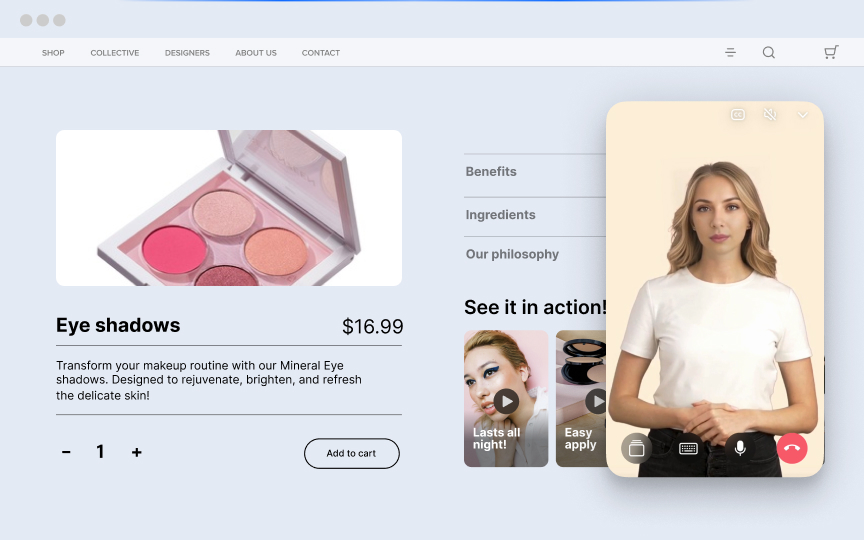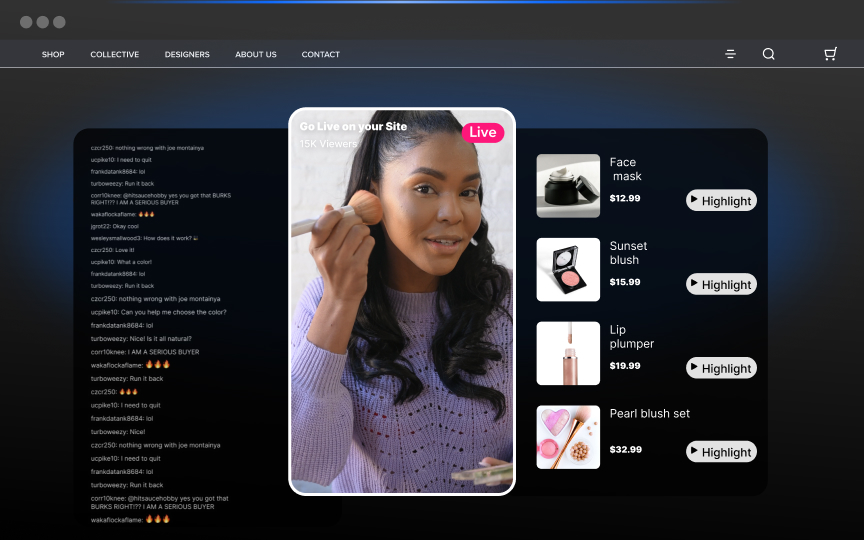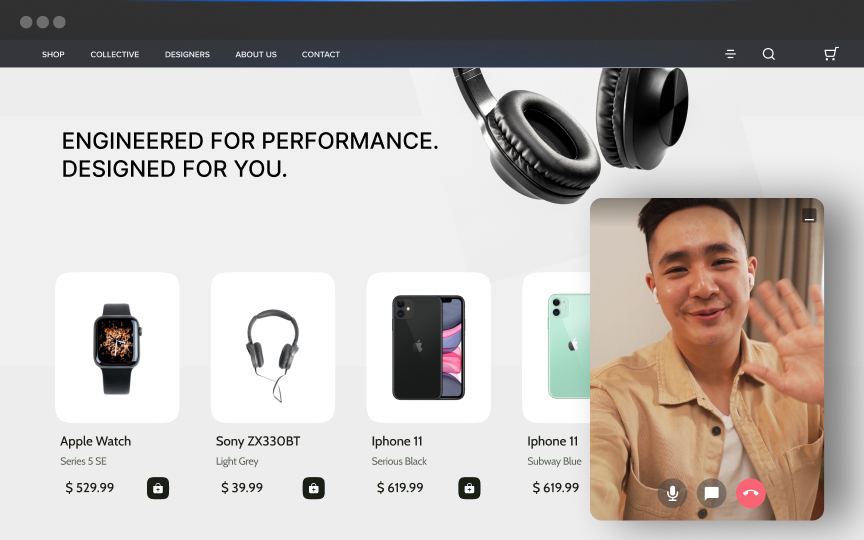Video has become an integral part of many leading brands’ marketing strategies. Today, brands use video as an engagement hook across the buyer journey. Around 86% of businesses use video as a marketing tool. However, to ensure maximum impact from video marketing initiatives, brands need to nail every step of the video production process. With a detailed video production guide at a marketer’s disposal, it is possible for brands to create the right video experiences for their customers.Video production basics include 3 key steps: pre-production, where you plan and map out a video production process, write a script and build a strategy. Then comes the production phase, where you shoot the video, after which, post-production is the step involving video editing, music addition, and final touches.This article is a step-by-step video production guide to help you get started. Let's go through the process in detail.

Video Pre-production
Pre-production is where you plan out the details of your video. You ascertain what you will produce, and who the video is targeted at, identifying the time and resources required to create the video. Often, pre-production is considered the longest of the video production steps. This is because effective planning ensures your final output is a success.
Zero In On the Objective
For you to plan out your video, you need to have clearly defined the objectives of your video production process. You must define the audience, and explore what they stand to gain from your video. Like any video content, you need a goal to guide efforts through the video production process.
Identify the Target Audience
A great video targets the exact audience persona to deliver a message. If you already know who your audience is, how they think, and what they like, the chances of making a successful video are high. If not, you can go beyond preliminary research data like age and demographics by conducting interviews to understand user behavior, gathering feedback, and monitoring social analytics.
Spell Out the Core Message
Once you identify your target audience, it's time to use this data to create a compelling message that mirrors your video's objective. Think about the reactions you expect from those who watch your video. Find out what your audience wants to see in your video, and center the message around elements that inspire a reaction. This will help define the core message of your video production.
Build a Strategy for Video
A video strategy involves the logistics of the video production process. What's the budget, and how do you intend to use available resources? Are you going to repurpose your videos that perform well? These are some questions you can ask to build a video strategy.Strategy is imperative to having a framework to direct your video production process. When you work with a video strategy, you are likelier to stay within budget, urging sustainability as your video strategy evolves.
Get the Creative Juices Flowing
Your video concept benefits from ideas and insights about video production basics and trending techniques. To stay creative, you may brainstorm over the production brief, find the ideal presentation style, and search for templates that best entice the desired audience. Comparing videos on the open web for your chosen topic is a great way to stay creative and inventive during the video production step.
Write the Script
Once your creative strategy is developed, after hours of collaboration, it's time to pen down your script. This is where all your research during pre-production pays off. Your goal during this process is to continuously research the core message and identify the proper manner of delivery.Assume that you are speaking to your audience, and find ways to use the style and tone to your advantage. You can get more experts involved to diversify the script too. Just make sure there's a flow in the content that revolves around your main message and creative approach.
Create a Storyboard
Once the script is ready, it's time to draw out the various scenes in your video. Storyboarding is the process of showing how your video is going to be shot, where you'll need graphical elements in the video, what type of lighting works best, and what subjects should be positioned where. Detail your storyboard with video screenshots, visual references, and video production guides to outline the process of shooting your video. Use sketches and writings to map out all the efforts going into your video. At this stage, you will be able to identify how you plan to use the time, location, and resources available. Ultimately, you're a creator, and your main goal is to prepare every shot so that execution is seamless when the video production process is in full swing.
Scout Locations
Once your video is ready to be shot, it's time to find a place where the magic happens. It could be indoors, outdoors, or simply an animated video. In many cases, you may require permission to shoot at a location or a well-light place to shoot some of the scenes. This step is to ensure you are well-prepared in time for execution.
Gather the Required Equipment
Since you have a clear plan of how the video will be shot and all the resources involved it's time to address the technicalities. At this stage, you discover the type of equipment, sourcing plan, and hands required to make your video successful. If the video does not involve shooting, you must identify the software and related equipment required for the creation process.
Onboard the Cast
Based on your plan, this part of pre-production is where you get the actors on board. Find out the most effective ways to get the right talent to work on your video and translate the plan and vision into reality. If you need voiceovers, you may have to find the right artist for that too.
Stay Organized
Use a project management tool or spreadsheet to keep track of deadlines, deliverables, process flow, and contact information. A production summary contains all the information you've gathered during pre-production. This documentation allows everybody to stick to the plan, making it easier to share ideas and collaborate during the video production steps.

Video Production
The production part of the video production steps is the actual execution of your idea, where you bring the vision to life. Since you have a clearly defined approach and have all the equipment and resources ready, it's time to let the camera roll. This is where you get to the logistics of your video production process and work until the video is completed.Some key steps involved in production involve:
- In the case of an actual directed shoot - Setting up lights and the camera and directing the talent
- In the case of an animated video - Characterisation and bringing together all the elements
- Orchestrating the production process end-to-end
In this phase, your script and storyboard serve the purpose to translate your vision of the video into reality. When you have all the material in pre-production ready for utility, it becomes easier to focus on implementation as everybody gets going with the plan rather easily.
Video Post-production
Post-production is where you optimize your video, make final cuts and edits, and add audio and other elements to make a stunning output. You may cut your video to the desired length, add voiceovers where needed, color the video, and even throw in some special effects. The steps involved in post-production are usually:
- Video editing
- Adding voiceovers
- Color and visual branding
- Adding special effects, animations, and text
- Add subtitles if required
During post-production, the most intensive eye-for-detail and creative approaches pay off. This is where you refine your video to make it ready for viewing. It's common to create and test multiple versions of your video for the best results. Once your video is fully integrated with all the elements to make it stand out and is aligned with your core message, it's time for optimization and distribution.
Optimization and Distribution
As the final part of the post-production process, optimize your video for various social channels, media platforms, and consumption patterns identified during your video production process. This is where you leverage various distribution networks and campaigns to reach your video to the right people.Once your edit is complete, you can convert it to the desired format. For platforms like YouTube, Facebook, Twitter, and LinkedIn, mp4 is the best format. You may have to crop the video frame for Instagram to fit posts, carousels, or stories. Aspect ratio optimization is an important aspect, ensuring your viewers get the best viewing experience.You can start promoting your final video by hosting the videos on your website or app or on video platforms like YouTube and Facebook. At this stage, your goals for the video are one step closer to fruition. Using analytics platforms, you can track the performance of published videos along the way. If your goal is social reach, built-in social analytics can give you insights to execute your video strategy in the best way possible.

Firework Studio helps brands create professional videos online with customizable templates, editing tools, and AI-assisted editing.
Unlock the Untapped Potential of Video Production: Elevate Your Content and Inspire with Professional Assistance
While creating your video, it's crucial to stay organized and meticulously follow a video production guide. Your research will pay off as the process unravels. For any assistance or enhancements, leverage assistance from professional agencies or high-tech video platform solutions. Video can be a drag to produce continuously while inspiring the desired reactions. But it's worth the effort.As a brand, patience and consistency are fundamental to creating enriching video experiences for your audiences. Following the steps outlined, you can supercharge your video marketing efforts and effectively drive home the brand message.Don't let disorganization compromise your video production success. Follow a video production guide and watch your hard work pay off. Partner with Firework and begin leveraging high-tech video platform solutions to take your videos to the next level. Your videos can inspire the desired reactions with dedication and the right resources. Request a demo today.
Unlock Exclusive Insights
By submitting this form, you agree to Firework's privacy policy and consent to receive personalized marketing communications. You can unsubscribe at any time.
































